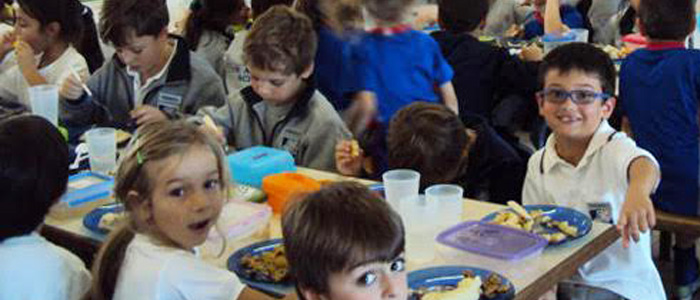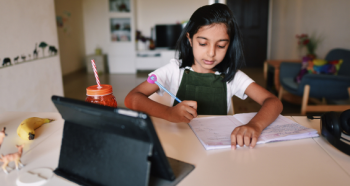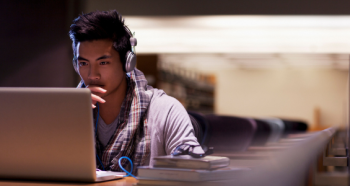A recent trip to Buenos Aires was designed to understand more about, and to visit, the remote teaching facility the British Council have in the city.
The facility is made up of 36 high tech booths which enable ‘telly teachers’ to remotely teach English to classrooms of students in Uruguay as part of Plan Ceibal. At the same time the ‘telly teachers’ are mentoring the classroom teachers to run classes on their own, so this benefits both the learners and the teachers.
Plan Ceibal is a Uruguayan initiative to implement the “1 to 1” model to introduce Information and Communication Technologies (ICT) in primary public education and is beginning to expand into secondary schools.
In four years Plan Ceibal has delivered 450,000 laptops to all students and teachers in the primary education system along with no-cost internet access throughout the country. As of 2009, results include increased self-esteem in students, improved motivation of students and teachers, and active participation by parents (94% approve of the Plan according to a national survey performed in 2009).
The success of Plan Ceibal is not only due to technological innovations, but also achievements such as the creation of a training plan for teachers in primary education, the active inclusion of the society and teachers in the project and the successful design and implementation of a monitoring and evaluation model to measure the impact nationally and serve as a guide to define future actions in the Plan.
The success of Plan Ceibal is not only due to technological innovations, but also achievements such as the creation of a training plan for teachers in primary education, the active inclusion of the society and teachers in the project and the successful design and implementation of a monitoring and evaluation model to measure the impact nationally and serve as a guide to define future actions in the Plan.
The Ceibal project emerged as a result of the digital gap that existed in Uruguay between the people who didn’t have access to technology and to those who did. It was implemented during Tabaré Vazquez’ term of office. Vasquez was the main proponent of this pioneer project; although it was inspired by Nicholas Negroponte’s One Laptop per Child project.
It raised three principal values: to distribute technology, to promote knowledge and to generate social equity. The project was named “Ceibal” like the typical Uruguayan tree and flower called “ceibo”, known in English as Cockspur coral tree. Ceibal also stands for “Conectividad Educativa de Informática Básica para el Aprendizaje en Línea” (Educational Connectivity/Basic Computing for Online Learning in English). The OLPC XO-1 computers used in the project are nicknamed “ceibalitas”.
The Ceibal Project has strategic principles: equity of knowledge, equal opportunities for children and youth, the disposition of tools to learn, not only the knowledge that is given by the school, but also with the knowledge that the child can learn by him or herself.
 I also visited the Ministry of Education, City of Buenos Aires, where we learnt about the area’s work to incorporate digital technologies in the classroom, a plan called “Plan Sarmiento” (similar to Plan Ceibal but only at city level), for primary state schools.
I also visited the Ministry of Education, City of Buenos Aires, where we learnt about the area’s work to incorporate digital technologies in the classroom, a plan called “Plan Sarmiento” (similar to Plan Ceibal but only at city level), for primary state schools.
The Sarmiento plan is forging a path towards innovation in teaching and learning in order to meet the challenges an increasingly digital society is bringing to education and to facilitate pedagogical innovation. It is part of a digital education integration plan in Buenos Aires city which seeks to promote equal opportunities and access to quality education as well as developing resources to ensure education and training meets 21st century cultural and communication demands.
- It is based on three main pillars:
- Strategy and training
- Cooperative digital platforms
- Technology infrastructure
Every state school student in the city now has a laptop, as in Uruguay as part of Plan Ceibal, with the government giving every state school pupil a laptop or a tablet, forcing private schools to up their use of technology if they want to remain a step ahead.
The ministry in Buenos Aires were also keen to get more information about our (soon to be revamped) ICT Starters programme so as to improve students’ skills in the use of technology.







